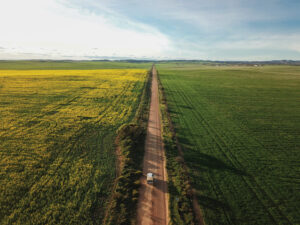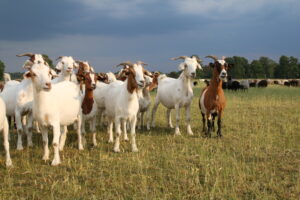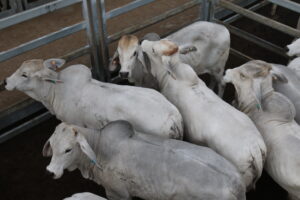There are times when you just have to stand up; “it’s now or never”. Coaches espouse the need to win the crucial 3rd quarter, the “break” point in a tennis game, or bowl the “dot” ball at a crucial time of a cricket match. “Sometimes there is no next time, no time-outs, no second chances. Sometimes it’s now or never.” The playwright Alan Bennet probably wasn’t talking about the wool industry, but he could have been.
Prices are great but the industry is in decline, how do we learn from other industries to save Merino in Australia. How do we make merino great again?
Is the wool industry at a “now or never “point in time? Some would say that wool has never been better positioned, it’s a unique fibre that is sustainable, perfect for the times, prices are at 11 year highs and supply going forward is not capable of flooding the market and causing prices to crash.
Why worry?
Well, for a start wool production is at long time low levels of production. This means that the industry capacity, exporters, processers etc. is also at greatly reduced levels. In the 1999 – 2000 season, more than 3.0 million bales were produced, this season that figure will be about 1.5 mill, in the past 16 years’ production has halved. You can’t say everything is fine, “nothing to see here”, when sheep numbers and wool production have been decimated over a relatively short timeframe.
You could also argue that wool is seen within the rural sector as “yesterday’s” commodity, with all the action seemingly in other industries. Grain, despite the roller coaster ride from unpredictable seasons and volatile prices, continues to be seen as favourable; feeding the growing world population is a positive story. To be relevant in this space, the grain industry effectively positions as at the cutting edge of innovation and promotes the latest technology. New ideas like “no till”, using GPS to plant seeds exactly in the right place, including clever use of advisors and agronomists have all set this industry up to be seen as cutting edge. All this has happened in the shadow of deregulation, seen at the time as a scary prospect but in reality, it has helped create the space for ideas and innovation.
Potatoes are now planted and dug by machines, tomatoes have fully mechanised pickers, the pig and chicken industries have dramatically reduced labour requirements as a result of introducing new innovations.
The dairy industry since 1980 has doubled production per cow, and while cow numbers have remained the same the result is a 192% increase in production per hectare.
These industries are all competing for the new entrants to agriculture as well as limited acreage. Wool has lost this battle for acres over the last 20 years; in the late 80’s the flock peaked at about 170 million, by 2010 it was 70 million. Drought played a part over this time, but the undeniable fact is that wool producers voted with their feet.
This cannot be dismissed as a sheep problem either, while wool is having a record run of prices, so too is the lamb industry. This is translating into more ewes mated each year to terminal sires, with merino flocks either completely abandoning merino’s or at the least mating as many as possible to produce saleable lambs. From 2004 to 2008 the number of ewes mated to merino rams dropped by 10.5 million to below 20 million. While this has stabilised or even steadily increased, both merino and “other” mating’s sit around 20 million ewes per year now.
These figures are difficult to confirm, however a discussion with lamb marking or dipping contractors will quickly confirm this ongoing trend; there is still a swing away from merino sheep in what were formerly merino strongholds like the Western Districts of Victoria.
Those that have made the transition to prime lamb production are content; they have pushed productivity reaching 160% lambing percentages. They also look over the fence at struggling merino farmers tending weaners in the Autumn and swear to never go back!!
For those who have been in the industry a long time this is incredibly frustrating. Benchmark figures show that wool can stand alongside competing industries in the financial stakes. We also know that the Australian Merino was developed to suit our conditions. This is still the case with the modern merino a fine addition to the grazing options.
What should happen?
Firstly, the wool industry must embrace new ideas. Business needs to constantly re-invent, so too does an industry like wool. This doesn’t mean just being open to new ideas, it means driving and supporting any new innovations until they are either proven wrong or fully implemented. It takes stamina to drive change.
Whatever happened to the robotic shearing experiment? My recollection was that it was initiated in
the late 80’s, and that circa $8.0 million was invested. What happened? Would the advances in technology now available make the challenges it faced then possible to correct now? Chemical shearing was a goer in the 1990’s, it too has all but disappeared.The idea that we still pack wool in a bale originally designed for a camel to deliver to wool stores, and that the major changes to the shearing process in the past 1000 years have been the handpiece and the self-pinning wool press does not promote the wool industry as innovative. The fact that if you walked into a wool shed in full swing 100 years ago, it would be fairly similar to the process we see today. This is an indictment that innovation is not the natural ally of the wool industry to date.
Successful businesses/industries embrace ideas, usually they have multiple innovations trialling at any one time. This engages innovators; the very people needed if an industry is to have a long-term future.
Who should do something?
The old chestnut is who will do it? From my perspective, if we genuinely believe in the Merino, or we derive our livelihood from wool (or have in the past) then it is up to us. That’s pretty broad, but to hone it down if we leave it up to those who have presided over the industry for the past 30 years then we deserve what we get. We know that it will be new eyes and new thinking that will create the innovation needed. The old guard is desperately in need of reinvigoration.
We should measure success on the basis of can wool attract the brightest young entrants. Cropping for example has the gadgets, new ideas and technology to sway not only new entrants but also investment. Wool needs its fair share, this can be seen as similar to the fight for acres; you either compete and succeed or you perish.
Conclusion
Is it possible that the wool industry could continue to contract and become irrelevant? The world does not have to have wool, so don’t expect others further upstream in the industry to drive the changes needed to see wool thrive.
The spud fork is long gone, wheat bags have been replaced by bulk bins, eggs are collected via conveyer belts – agriculture on many levels has embraced ideas to improve efficiencies. This progress will never stop as the challenge to produce more with less will only intensify.
We need to find the new ideas for wool, possibly the whacky ideas, so that the industry can then develop the persona of success. On the flip side; if the wool industry looks at innovation through suspicious eyes or adopts a cautionary or hesitant approach, it will continue to struggle. Ideas like EID tags, EBV’s, new selling systems, wool harvesting and handling innovations; need to be embraced to try to prove up the next industry improvement.
Now is the time; when the money is flowing in an industry the time to position for the next 50 years is now. If we wait for the commodity cycle to eventually take us back through the normal price ranges, not only will it be too late, but the fight for acres will have continued to erode wools position on the Australian landscape.












